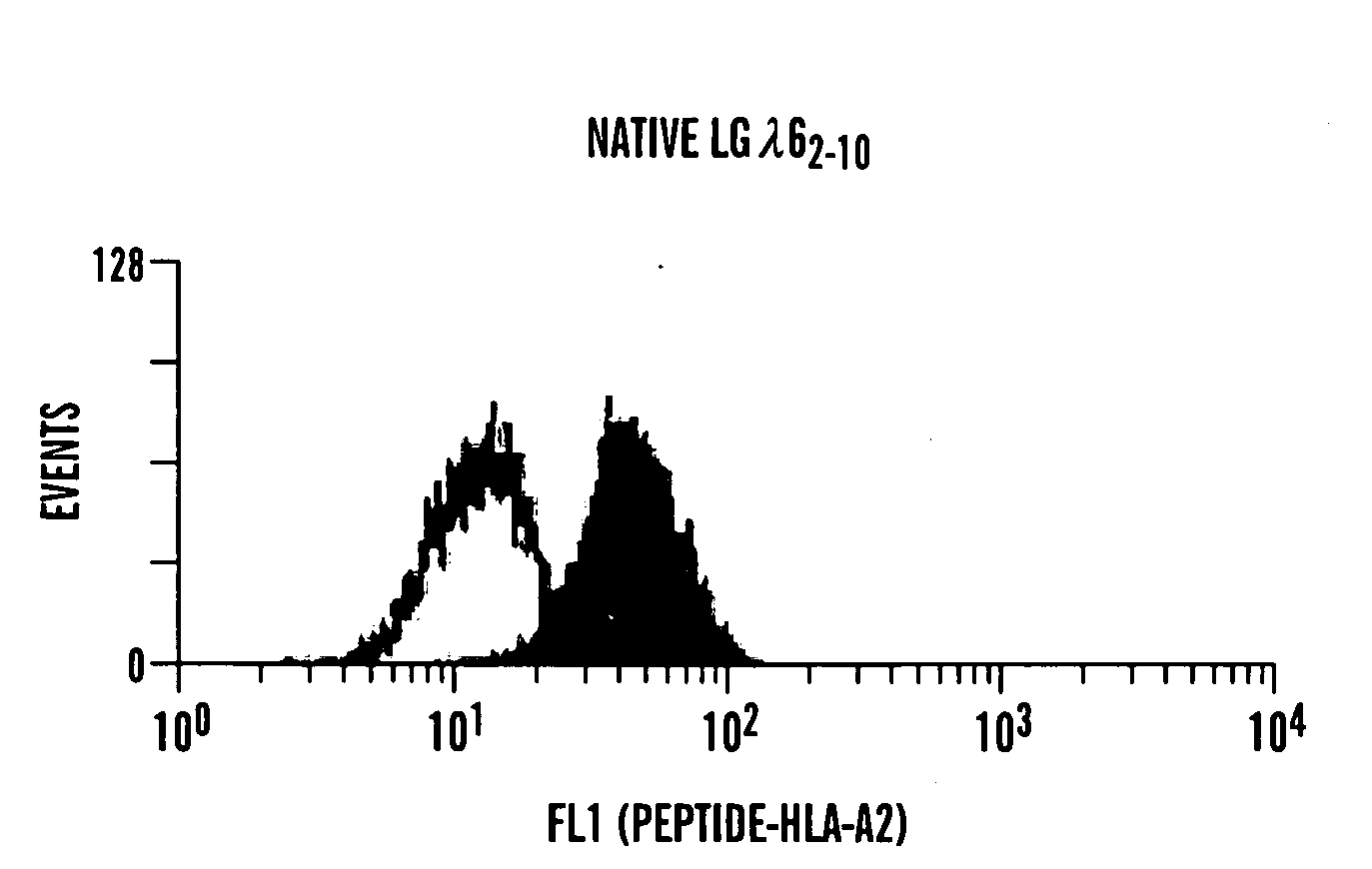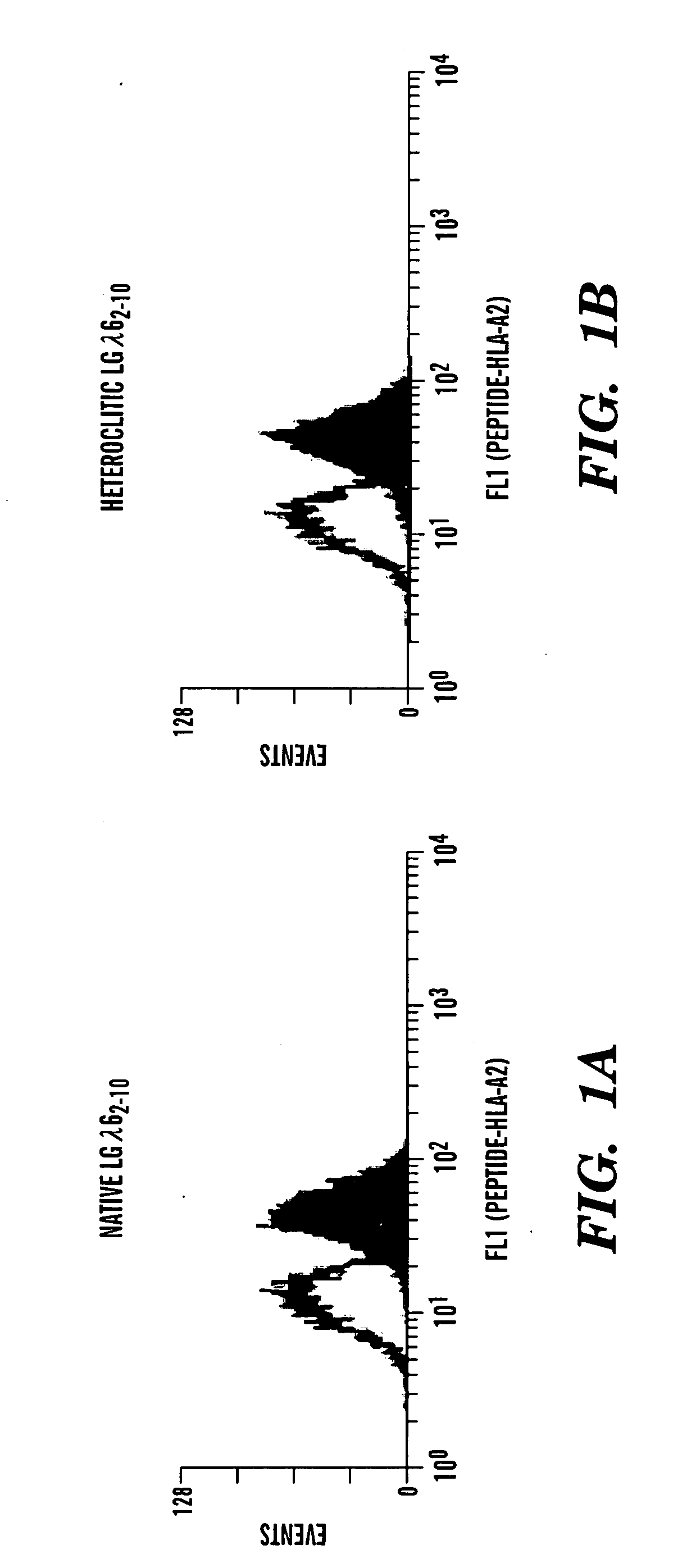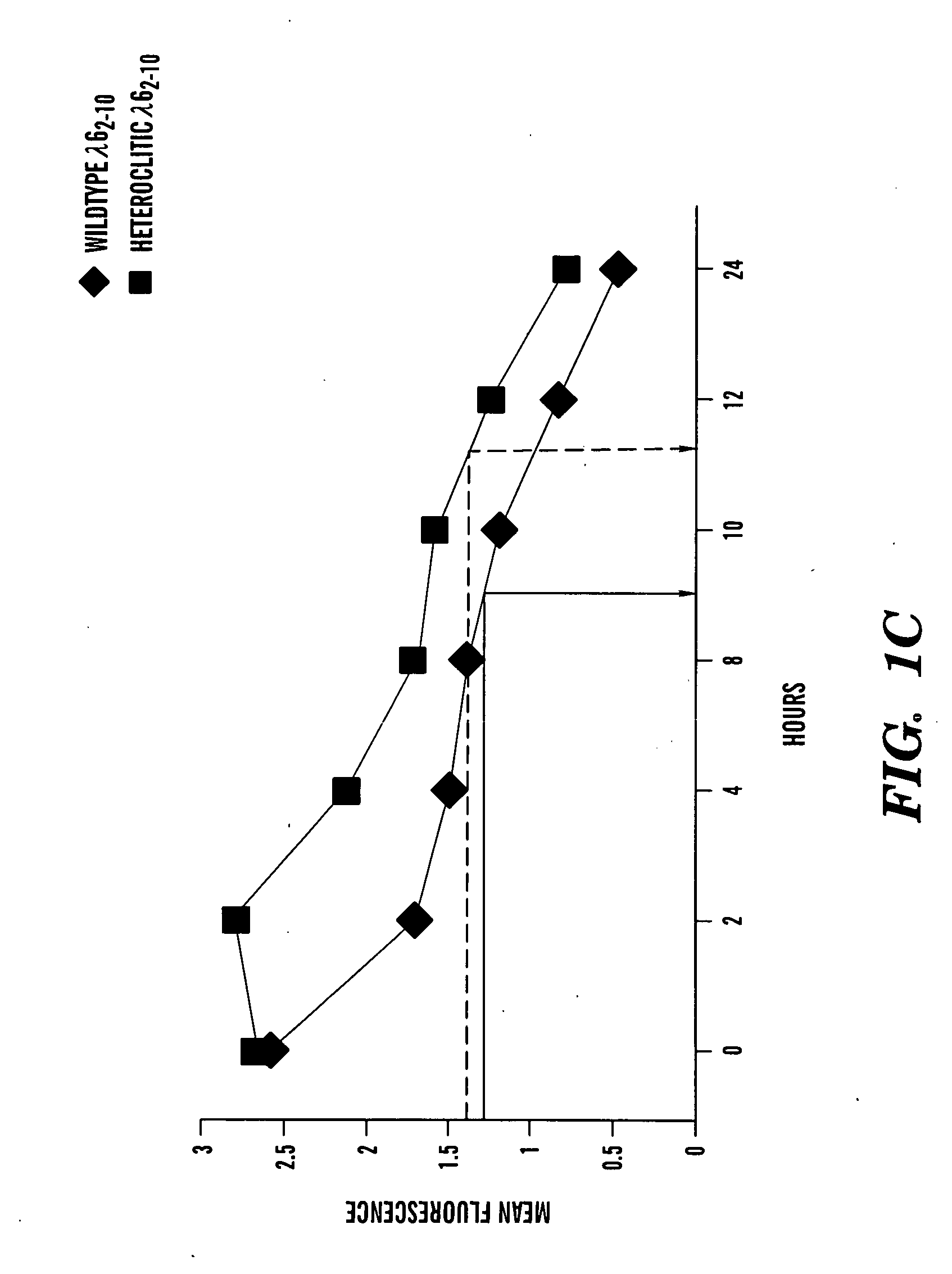Multiple myeloma and al amyloid immunotherapy targeting immunoglobulin light chains and uses thereof
a technology of immunotherapy and al amyloid, which is applied in the field of multiple myeloma and al amyloid immunotherapy targeting immunoglobulin light chains, plasma cell disorders, and plasma cell dyscrasias, can solve the problems of insufficient efficacy, toxic current treatment of al amyloidosis, and 2% of cancer deaths
- Summary
- Abstract
- Description
- Claims
- Application Information
AI Technical Summary
Benefits of technology
Problems solved by technology
Method used
Image
Examples
example 1
[0289]Design of immunogenic peptides. The inventors have discovered a method to exploit the plasticity of the immune system to develop a less toxic, more directed approach to plasma cell dyscrasias. Specifically, the inventors have discovered, using specifically designed peptides, a method to induce cytolytic T cells (CTL) capable of killing immunoglobulin light chain-producing B or plasma cells. Accordingly, the inventors have discovered a method for use of peptides as a vaccine for AL amyloidosis or myleoma. By sequencing of DNA from bone marrow aspirates from 264 AL amyloid subjects, the inventors discovered that the lambda 6 immunoglobulin light chain subtype was significant over-representation in AL amyloid subjects (Table 1), suggesting an important role for this type of light chain in AL amyloidosis. Therefore, the inventors designed peptides to be used as vaccines, where the peptides were substantially similar to a region of this immunoglobulin light chain to target the cell...
example 2
[0295]Induction of a peptide-mediated CTL response in vivo. To determine if these peptides were immunogenic as predicted by the algorithms, transgenic mice which express the human HLA-A2 allele were immunized with the native or heteroclitic peptides in an adjuvant relevant to clinical immunization schemes (Incomplete Freund's Adjuvant). The inventors discovered that a significant peptide-specific killer T cell activity was consistently induced (FIG. 2). These killer cells could lyse HLA-A2+ human B cell tumors (JY cells) coated with the native lambda 6 peptide, demonstrating that human Ig light chain-specific CTL can be induced in vivo and that lambda 6-derived peptides can be modified to increase MHC class I binding without significantly affecting T cell recognition of the native peptide expressed by target cells (FIG. 3).
[0296]FIG. 3 shows that the prediction of higher affinity binding of the heteroclitic peptide over the naive peptide results in increased number of peptide-specif...
example 3
[0299]Identification of individual peptide-specific CTL in population of T cells. The inventors also discovered that the peptide / HLA-A*0201-specific T cell from mice immunized with λ6 peptide can be identified and isolated by flow cytochemistry. HHD mice immunized with λ6 peptide produced T cells which were stained with anti-CD8 (a CTL marker) FITC and with a PE labeled λ6 peptide / HLA-A*0201 pentamer. The cells were detected using Fluorescent Activated Cell Sorting (FACS) using a BD FASCcan Flow cytometer. Data shown in FIG. 6 shows representative 2 mice (D and E) of those that stained positively for pentamer, along with individual killing assays for those mice, and a summary of the data for the mouse of D also shown in B and C. As shown in FIG. 6, by identifying CTL that are specific for the λ6 peptide presented in HLA-A*0201, the inventors can isolate the T-cells and potentially increase the percentage of T cell that will kill the plasma cell or tumor cell targets. This technique ...
PUM
| Property | Measurement | Unit |
|---|---|---|
| median survival time | aaaaa | aaaaa |
| time | aaaaa | aaaaa |
| time | aaaaa | aaaaa |
Abstract
Description
Claims
Application Information
 Login to View More
Login to View More - R&D
- Intellectual Property
- Life Sciences
- Materials
- Tech Scout
- Unparalleled Data Quality
- Higher Quality Content
- 60% Fewer Hallucinations
Browse by: Latest US Patents, China's latest patents, Technical Efficacy Thesaurus, Application Domain, Technology Topic, Popular Technical Reports.
© 2025 PatSnap. All rights reserved.Legal|Privacy policy|Modern Slavery Act Transparency Statement|Sitemap|About US| Contact US: help@patsnap.com



